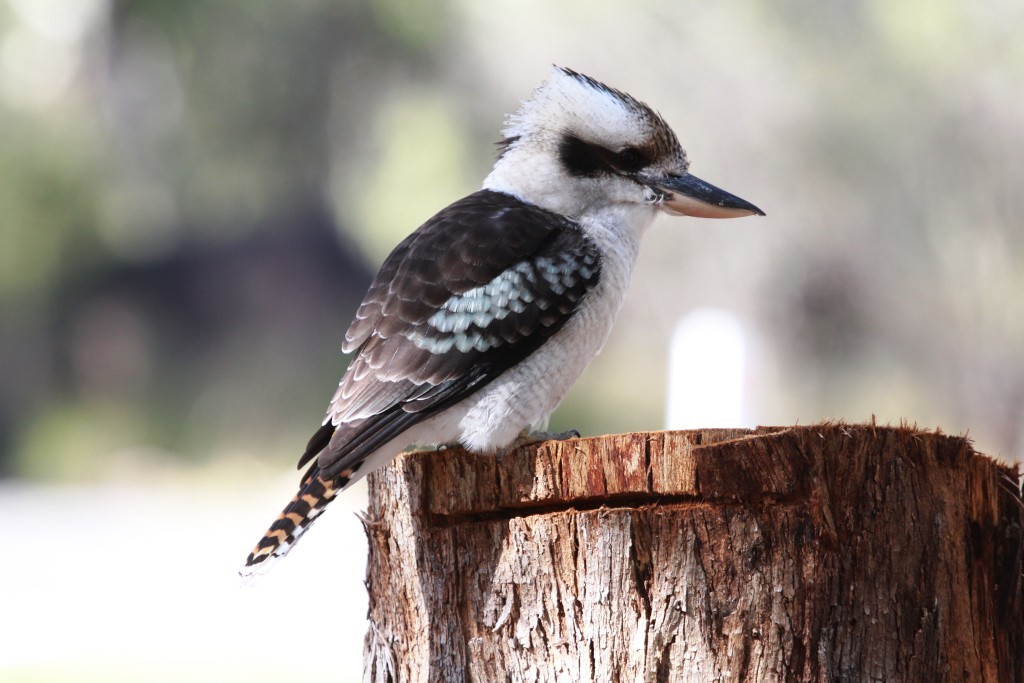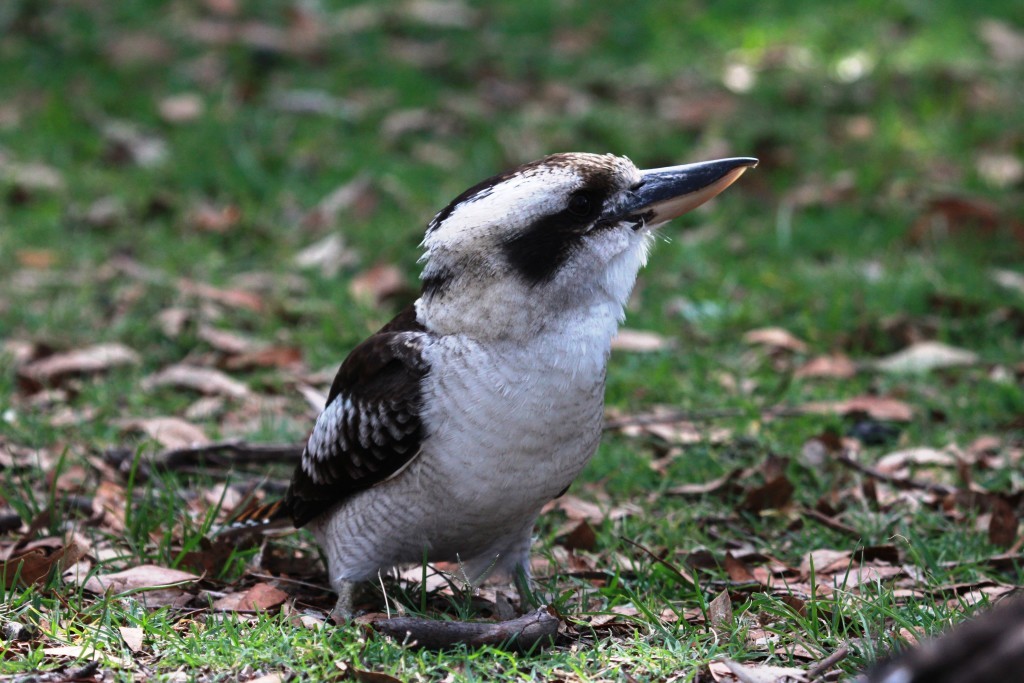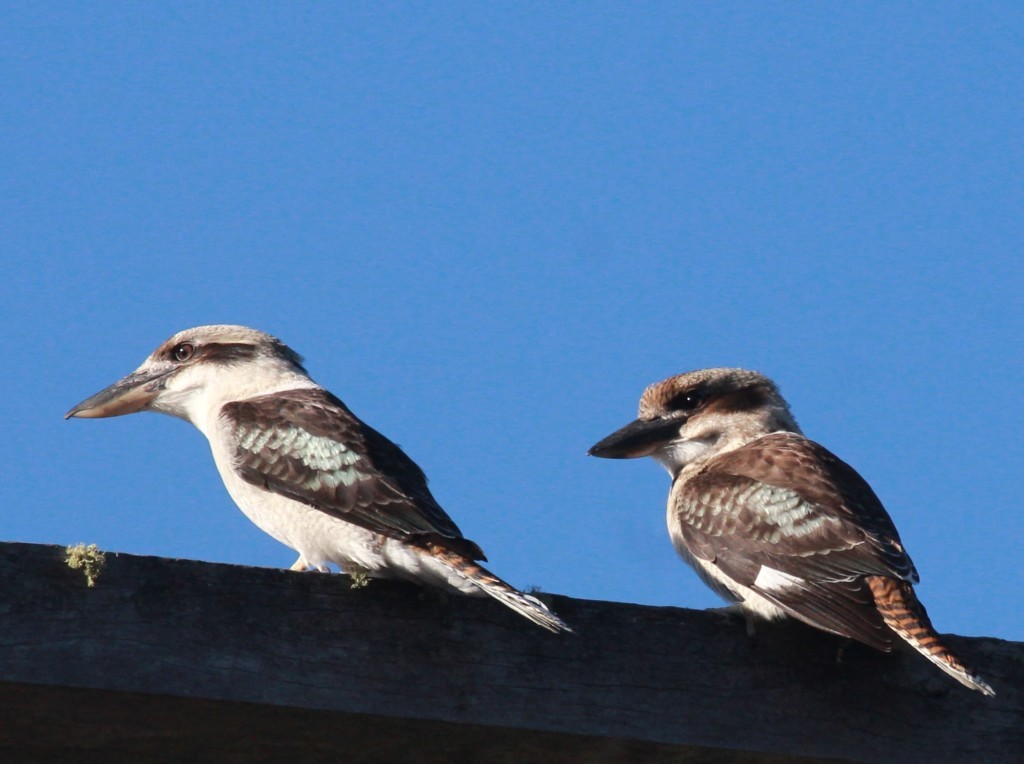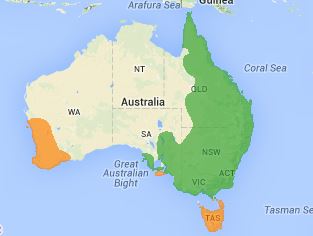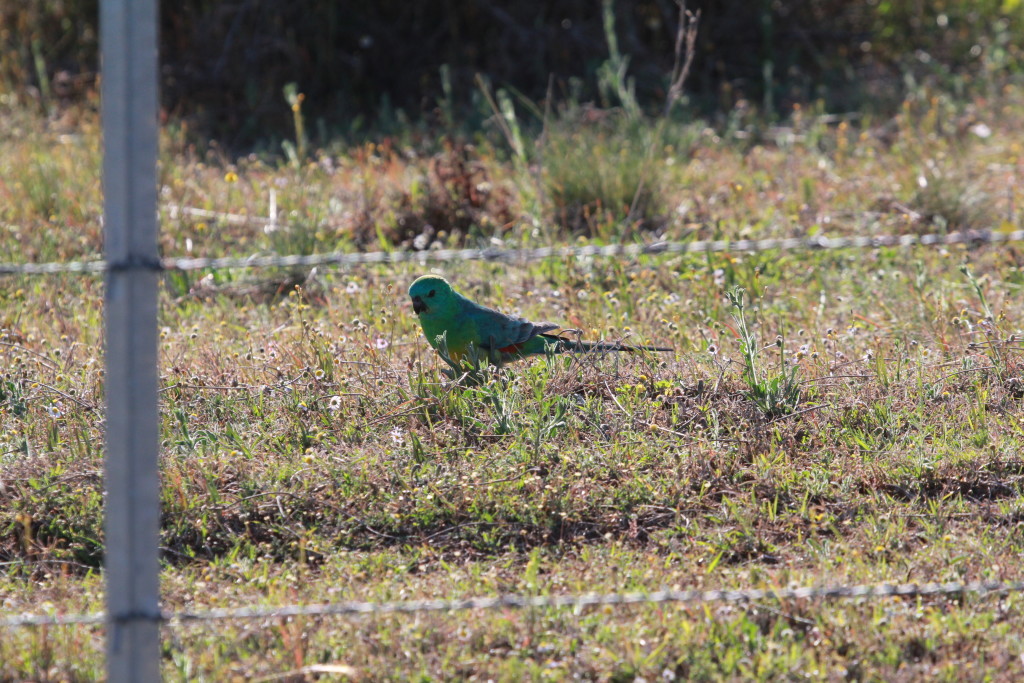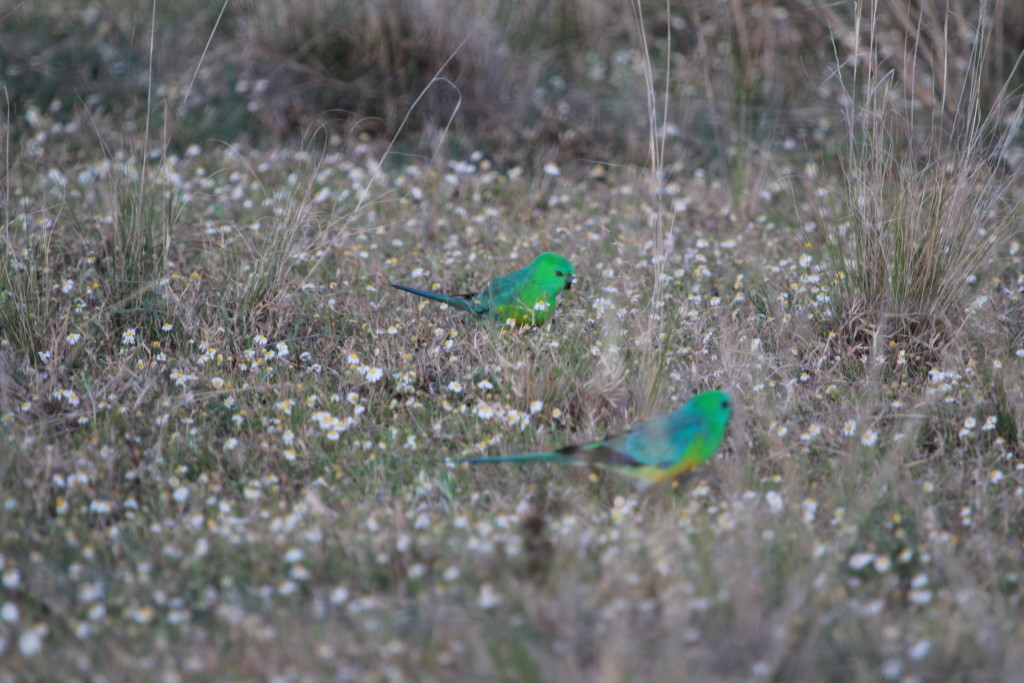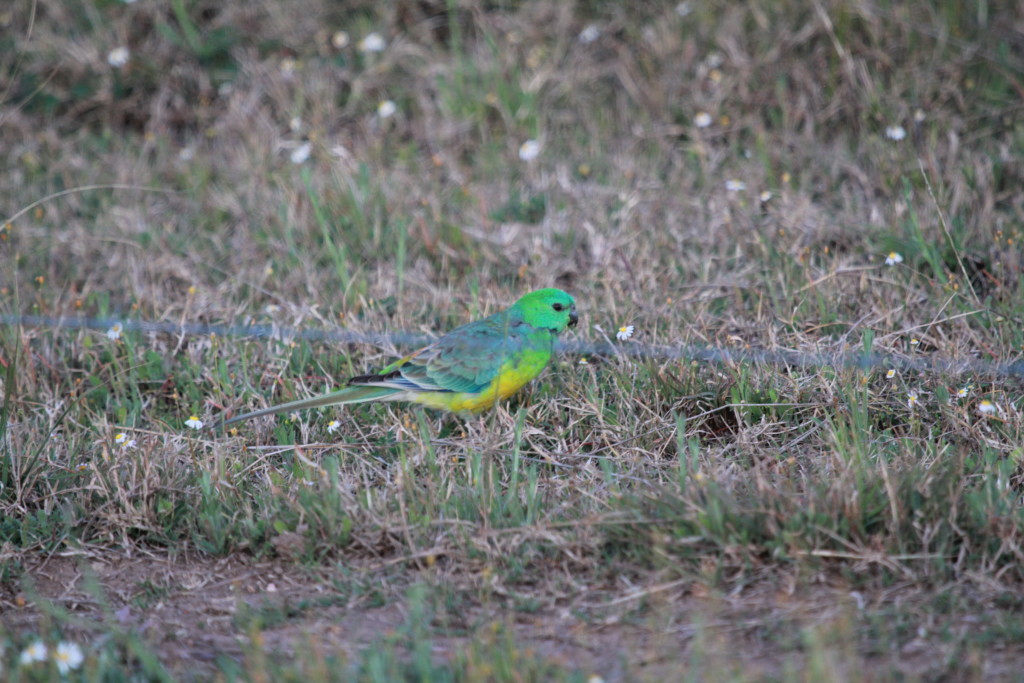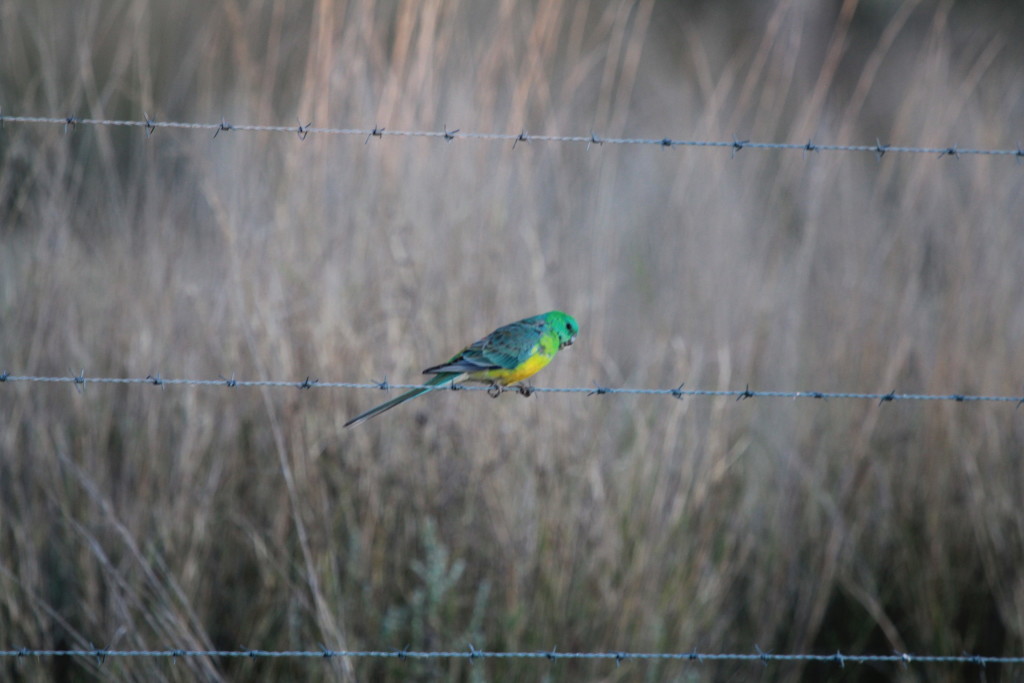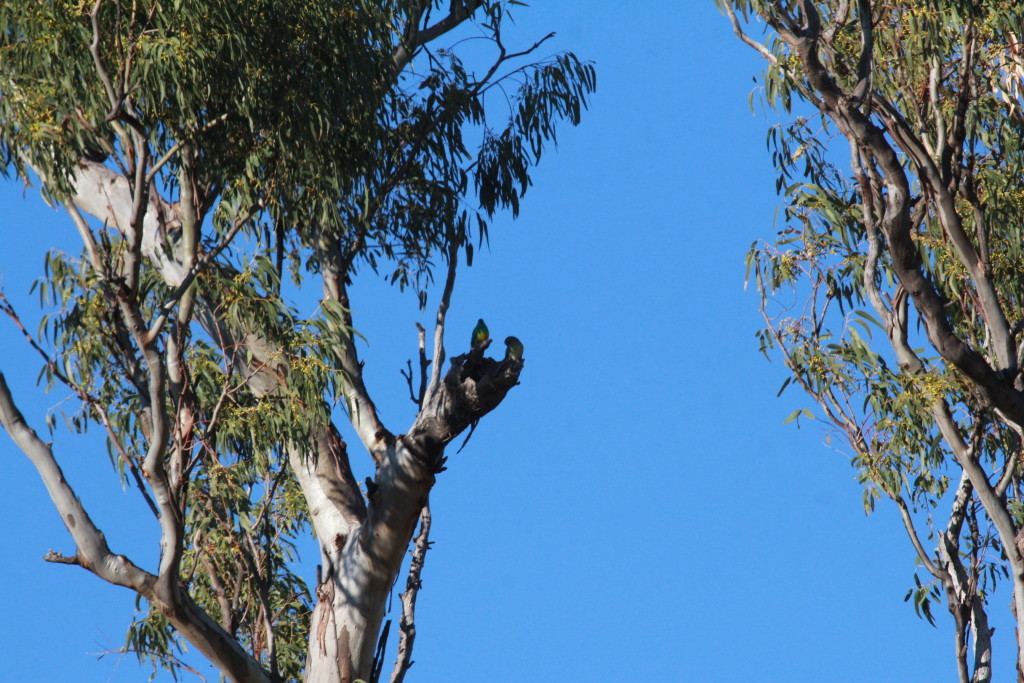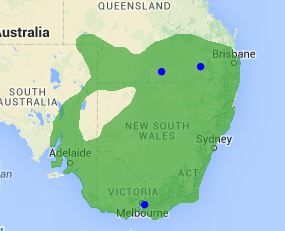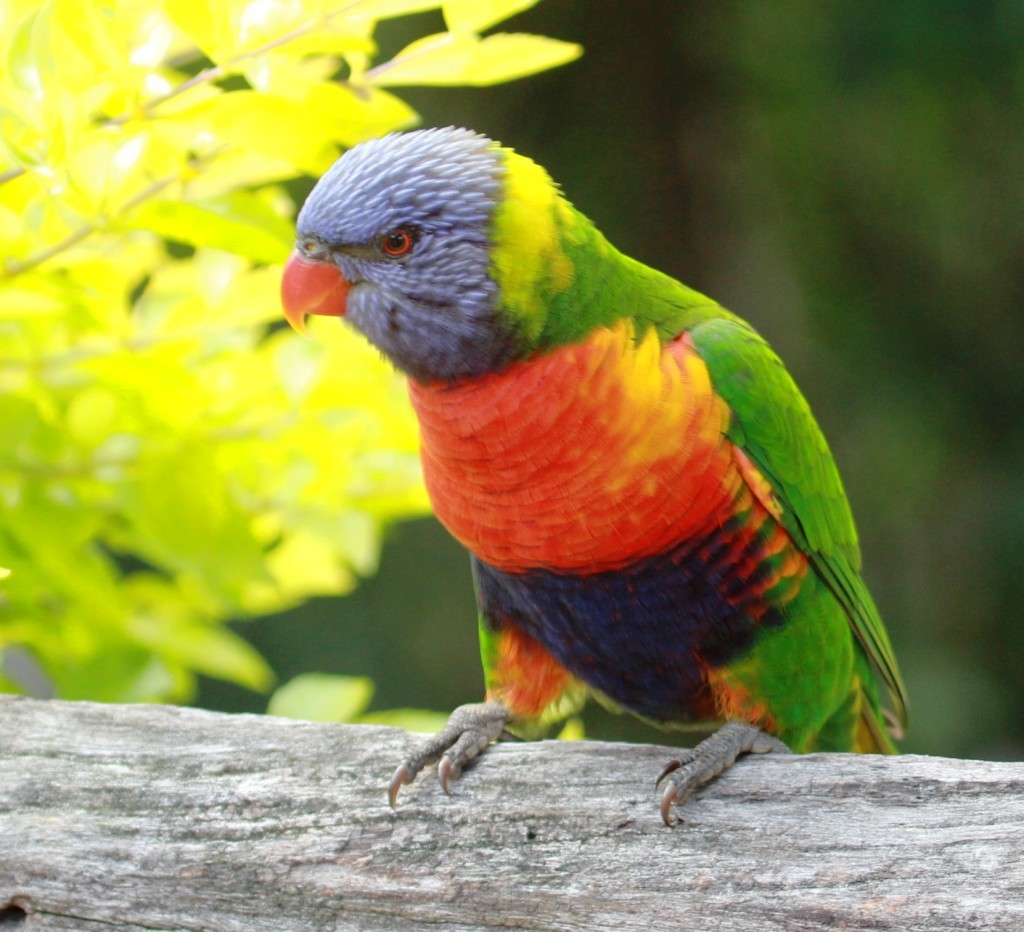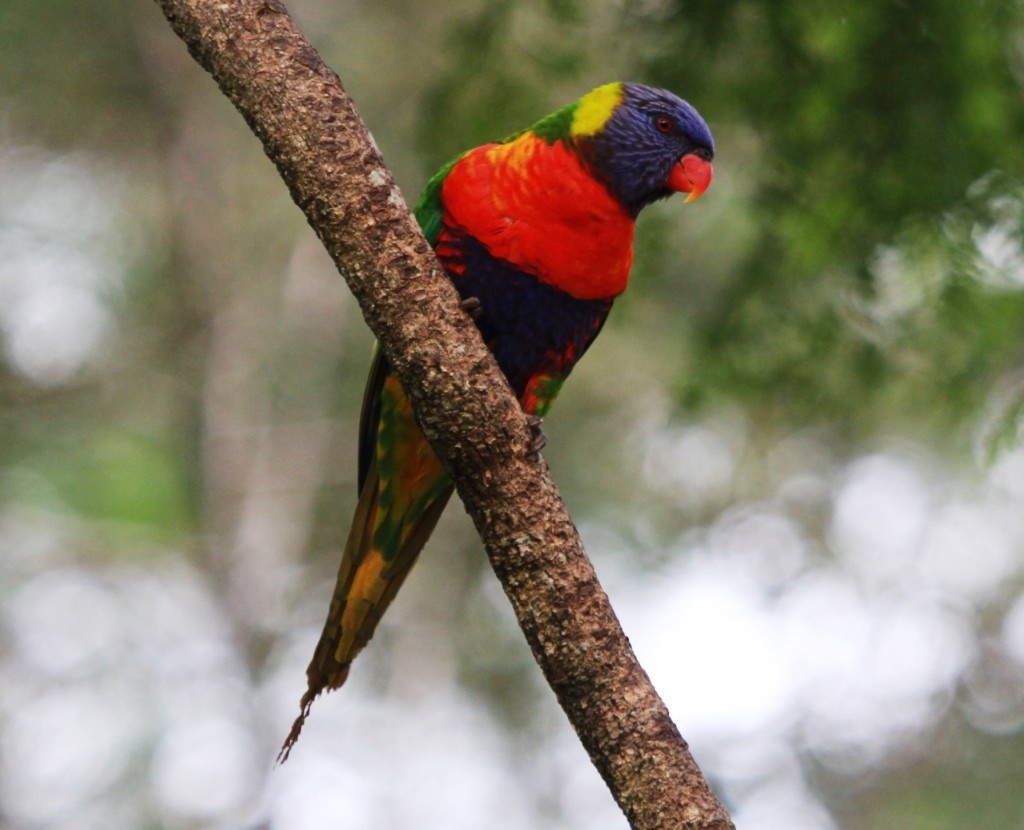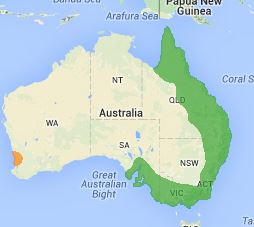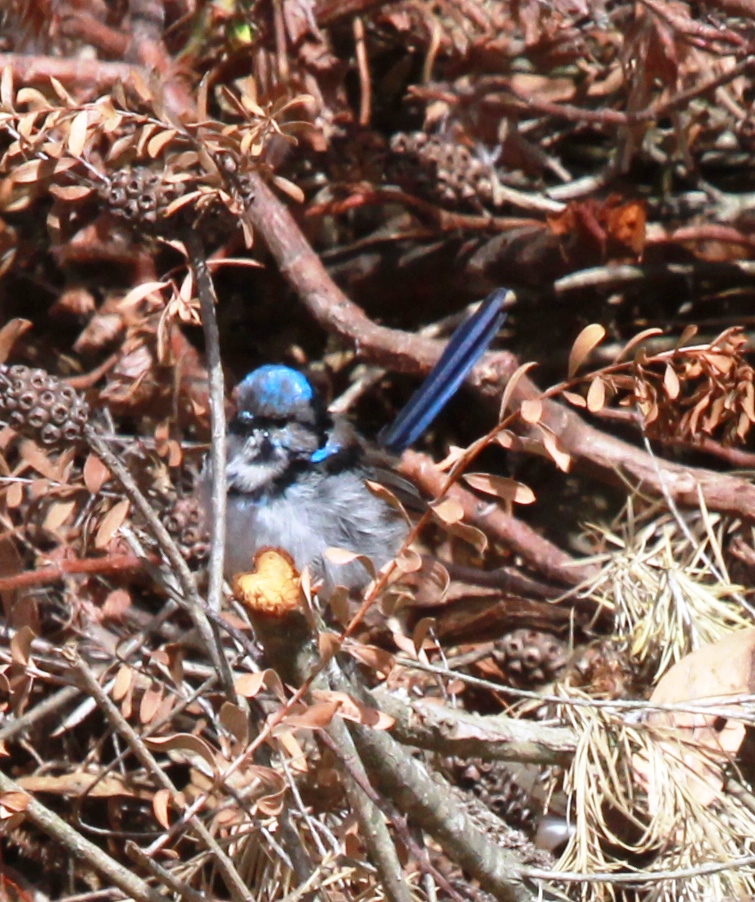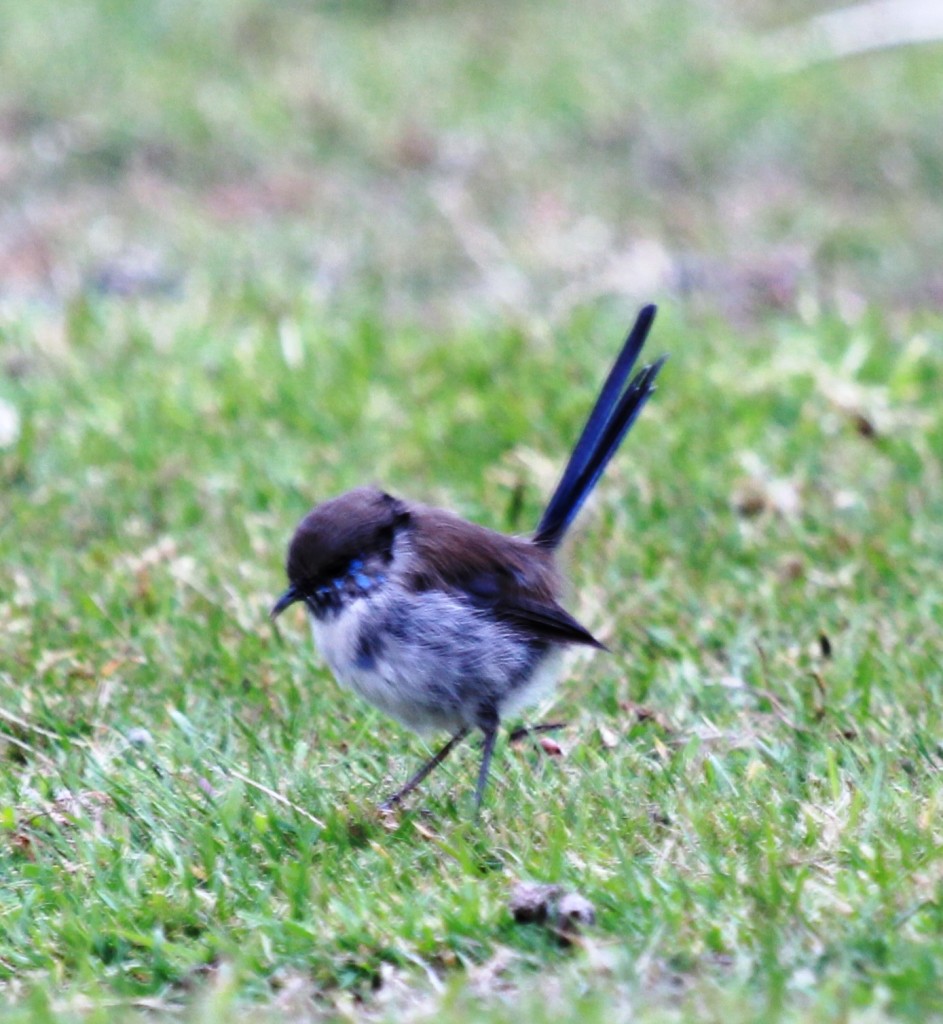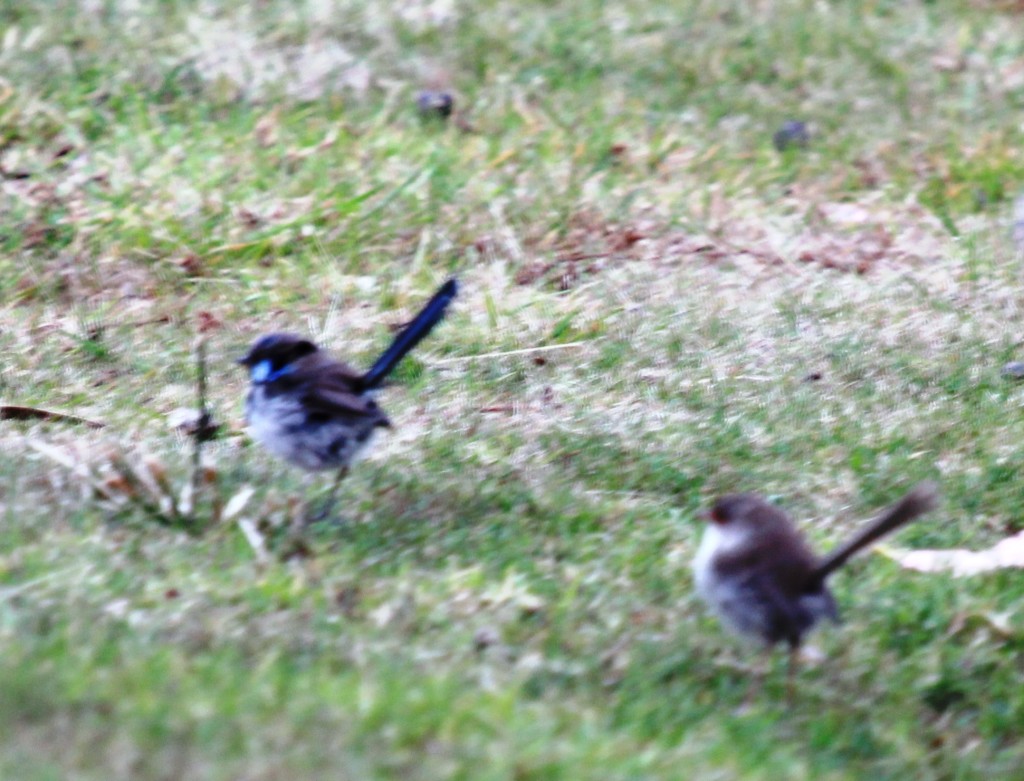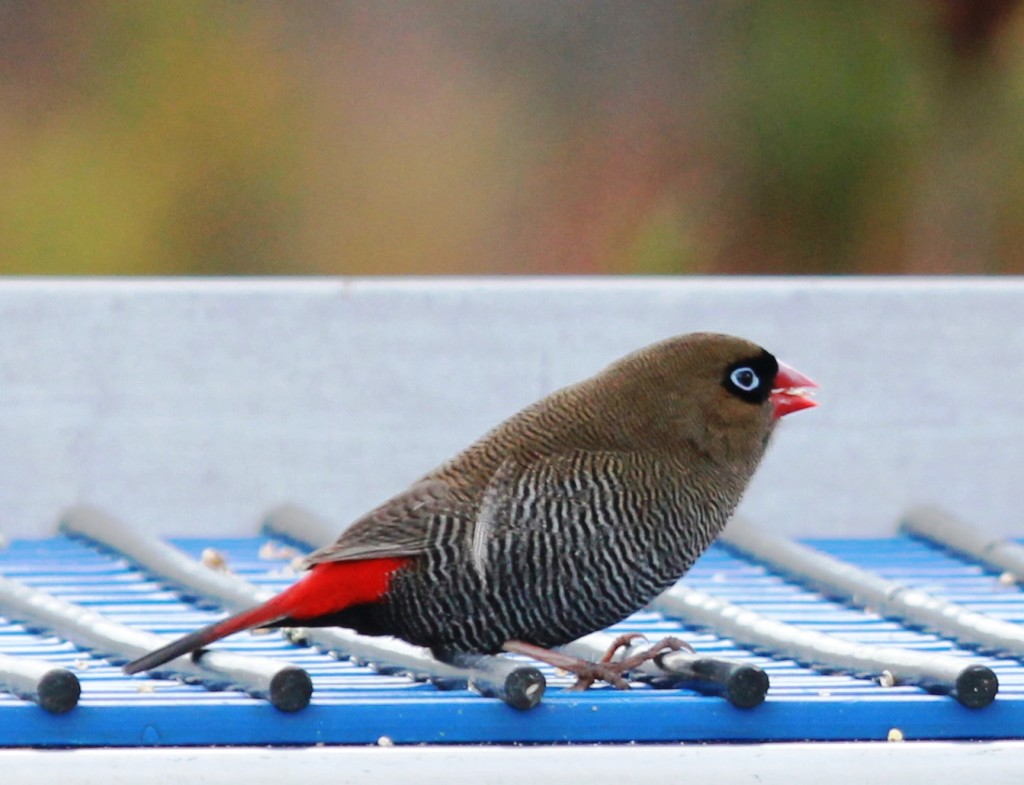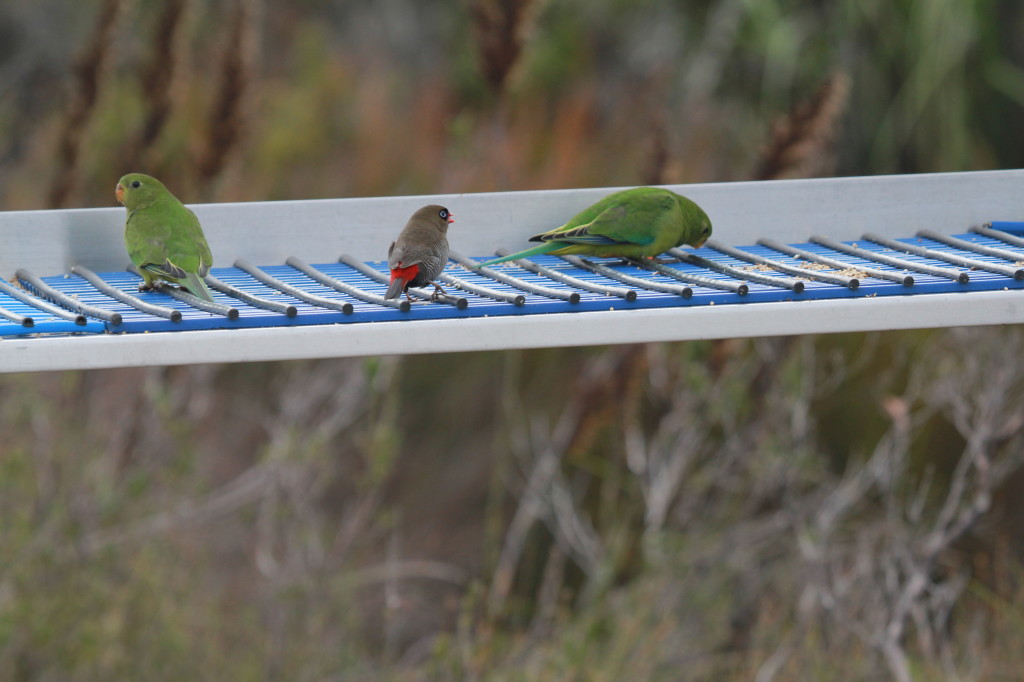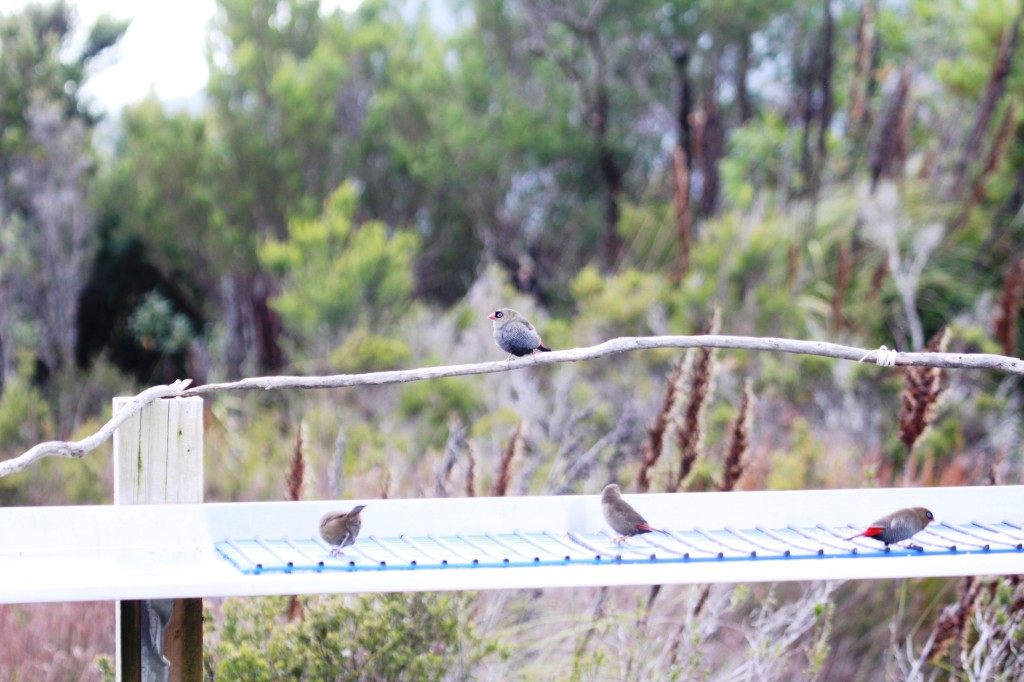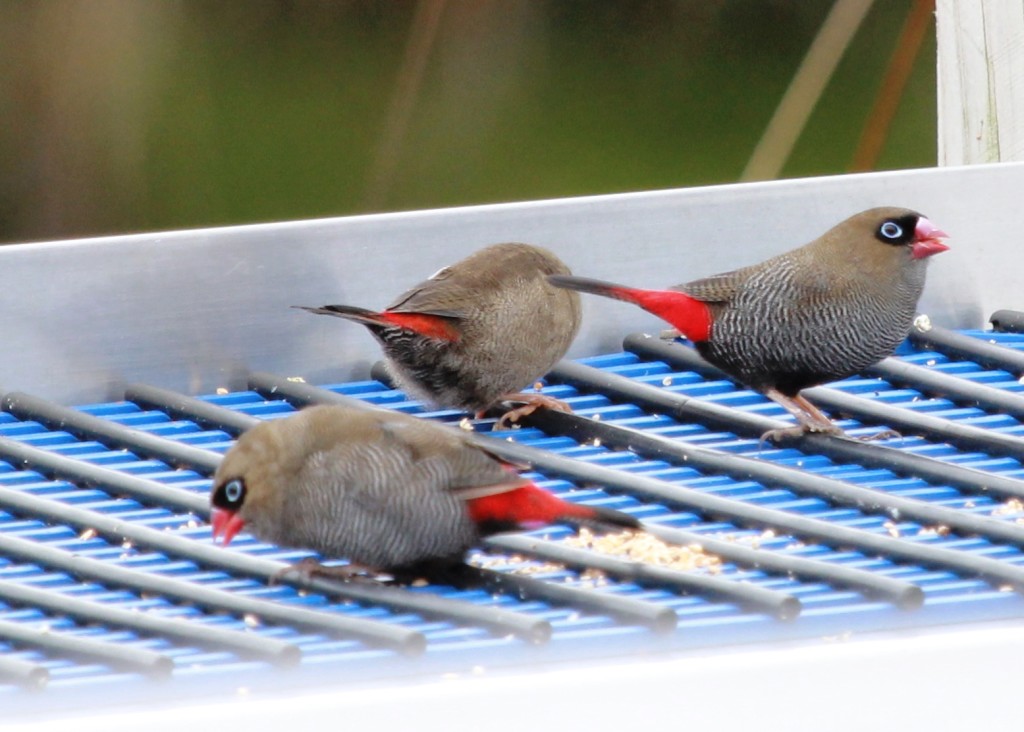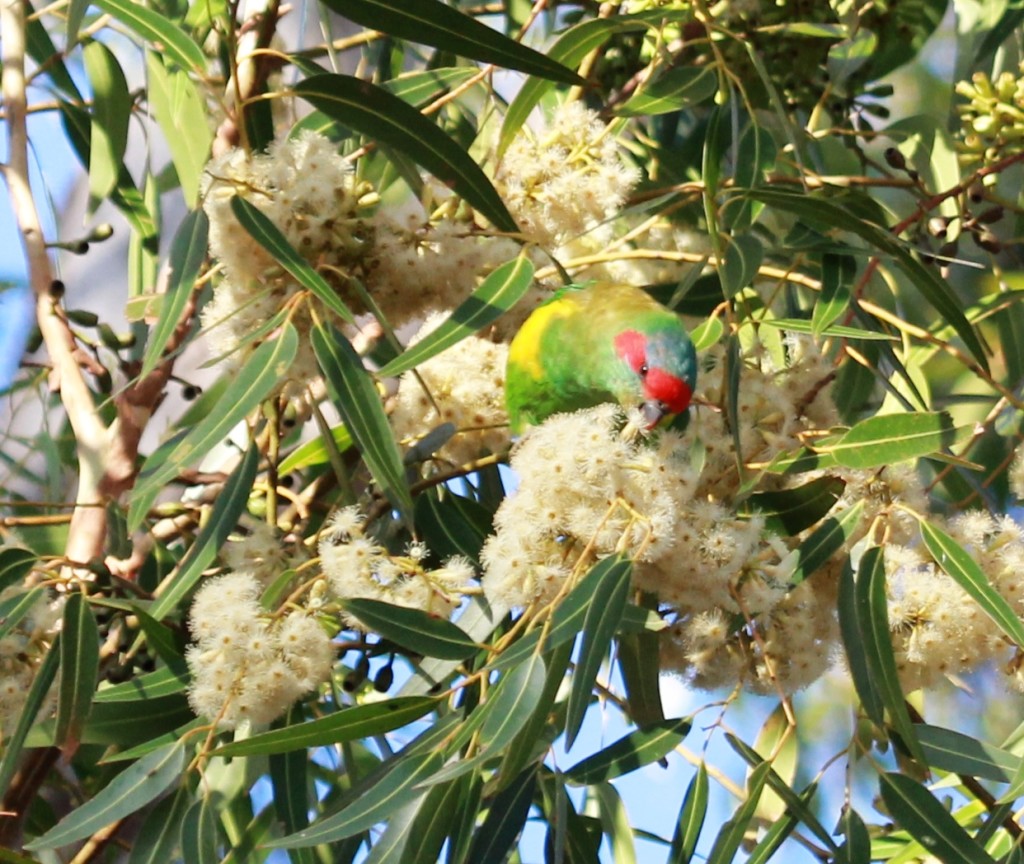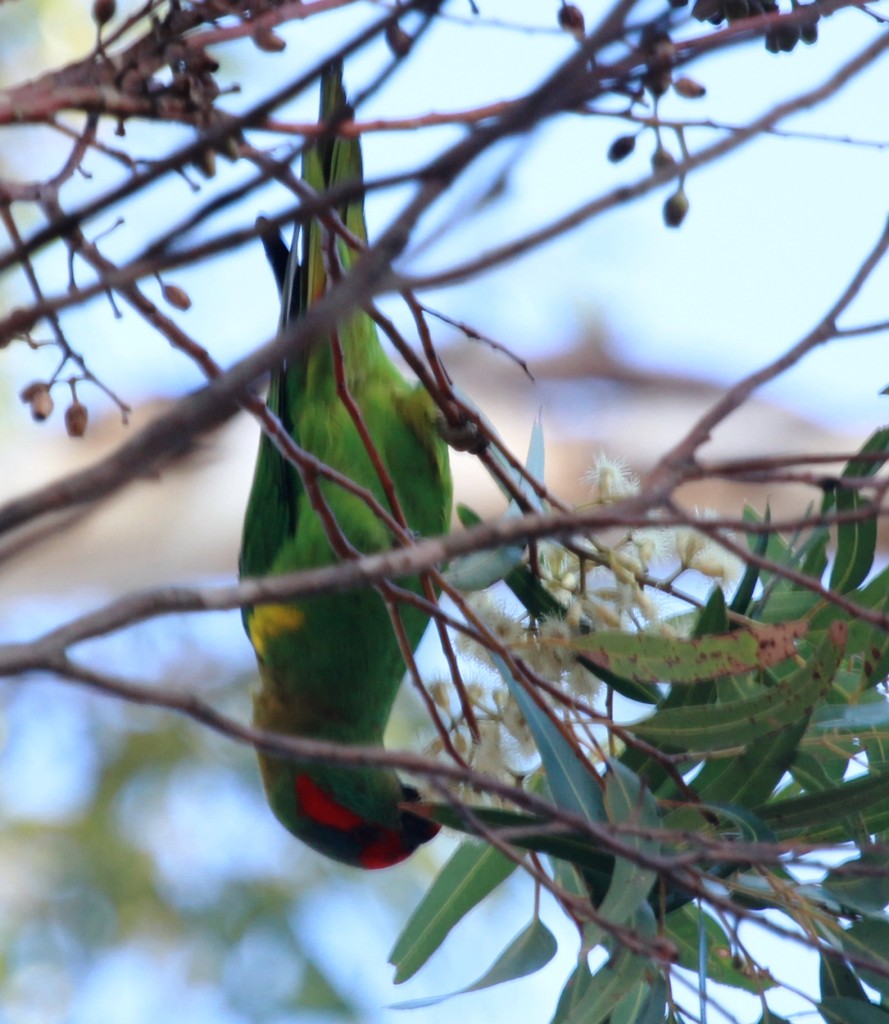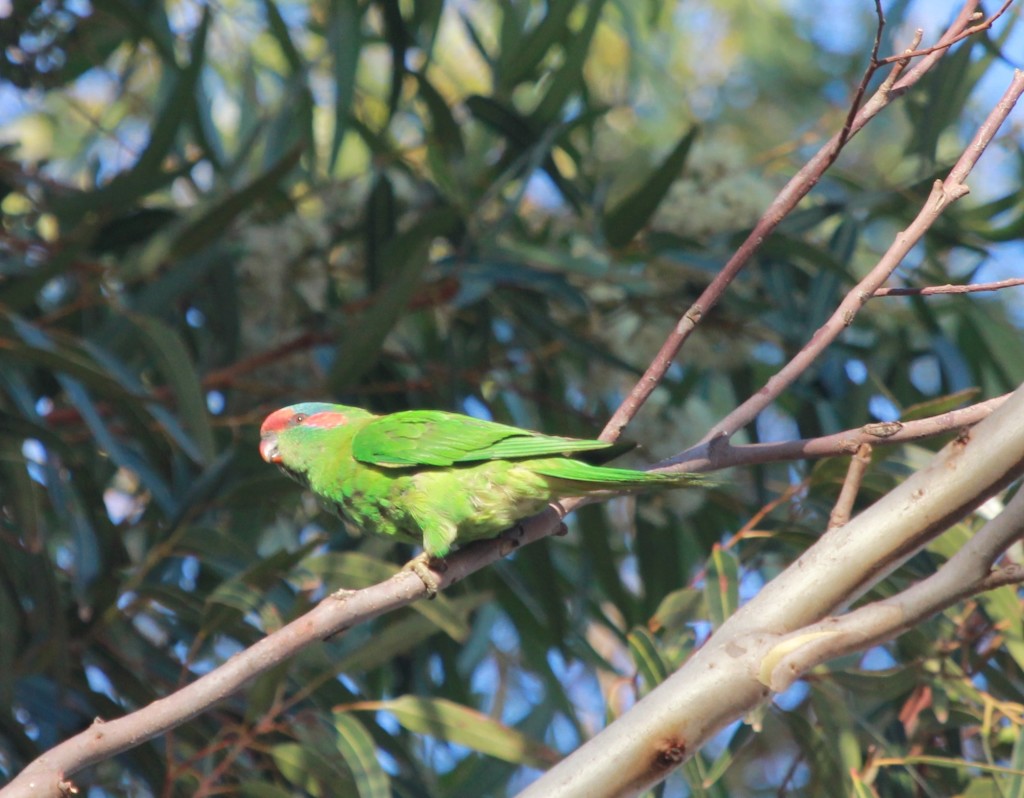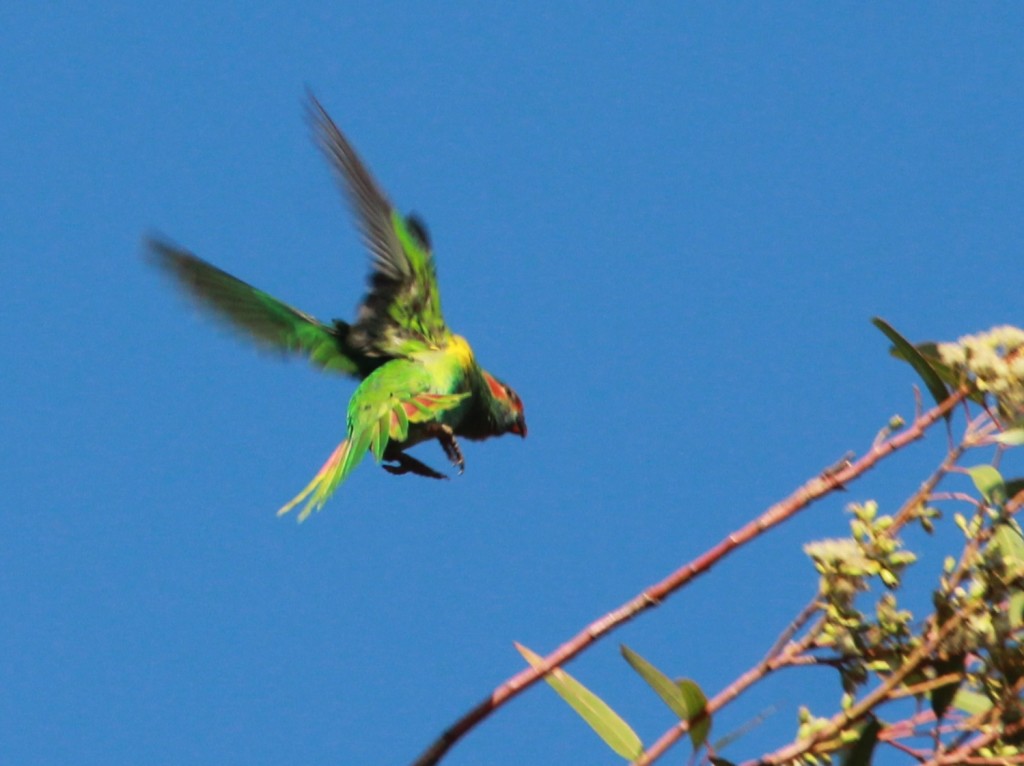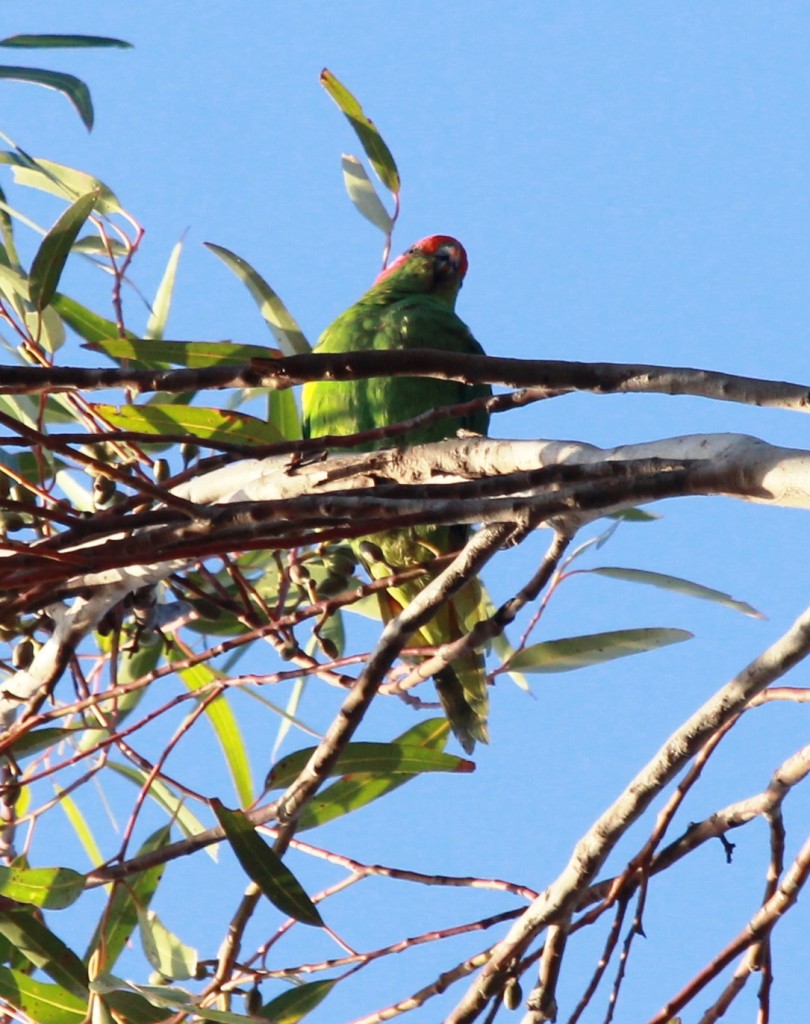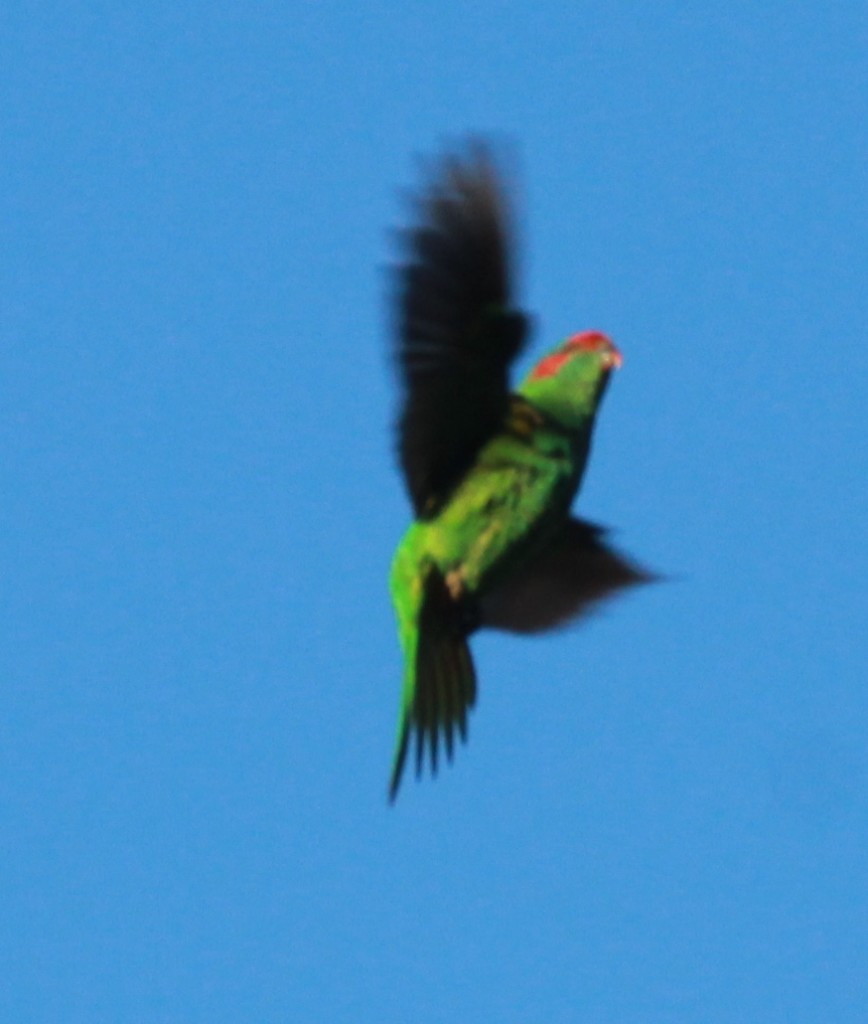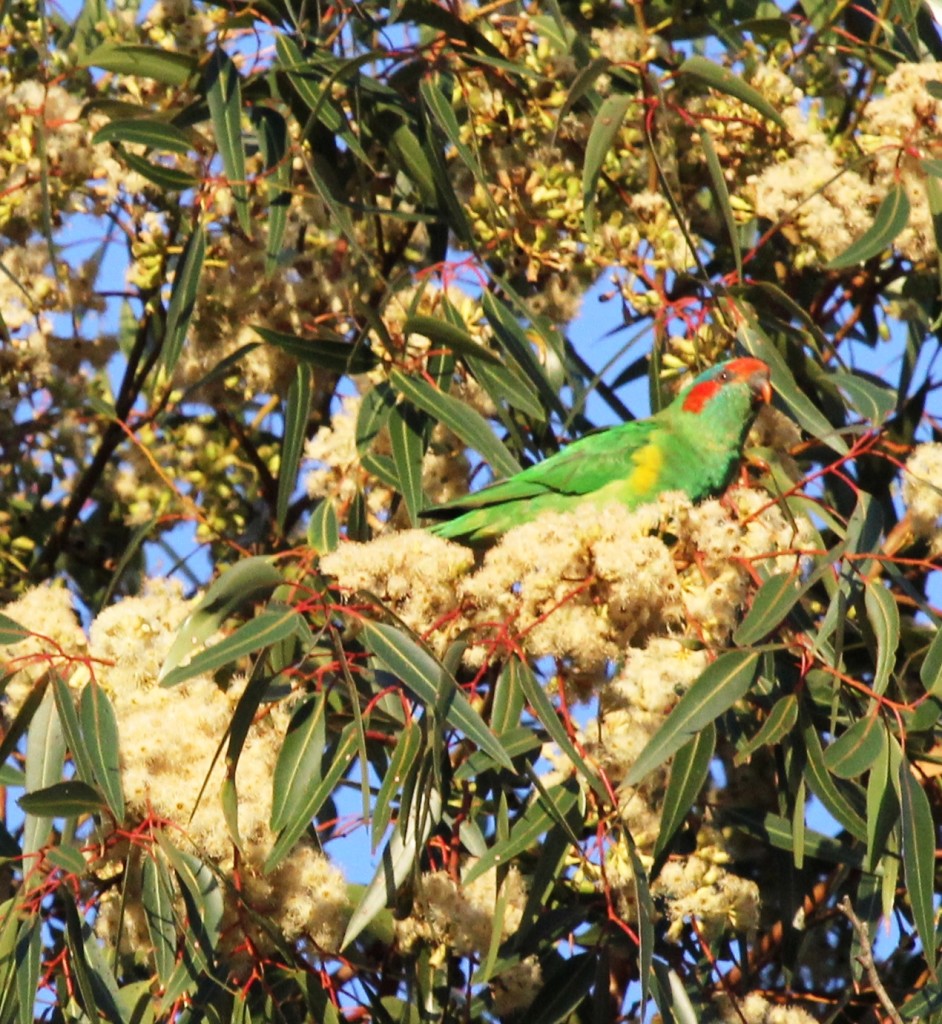The Turquoise Parrot (Neophema pulchella) is a species of parrot in the genus Neophema native to Eastern Australia, from southeastern Queensland, through New South Wales and into north-eastern Victoria.
I had to use a Wikipedia shot since the only one I could get was too far away.
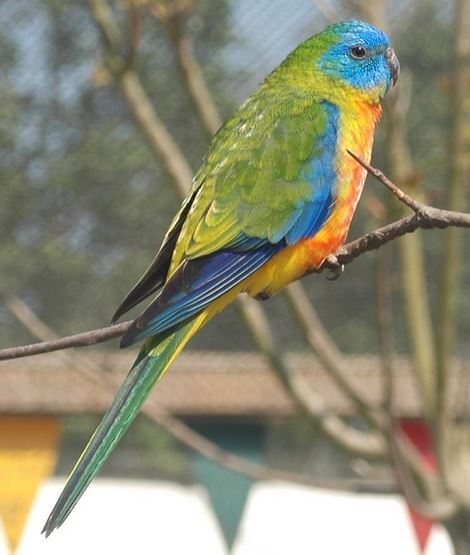 Sitting on a wire near Amiens, Stanthorpe area.
Sitting on a wire near Amiens, Stanthorpe area.
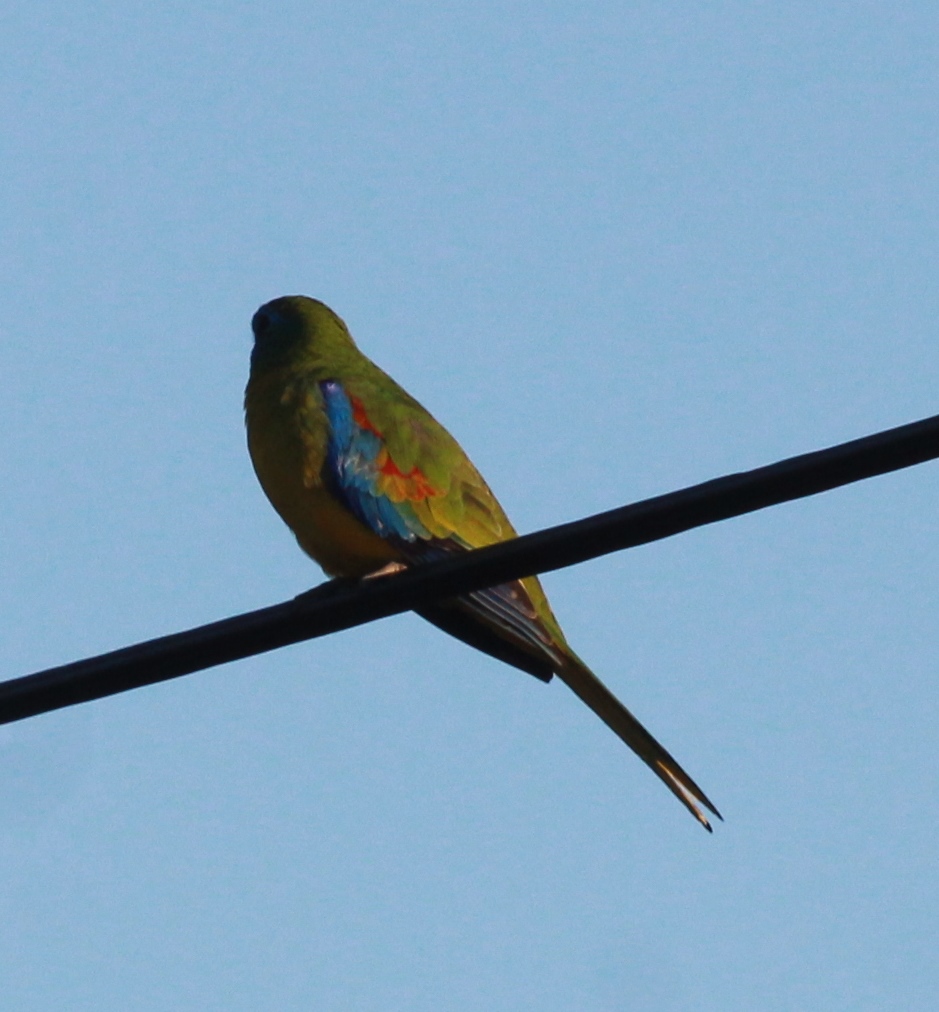
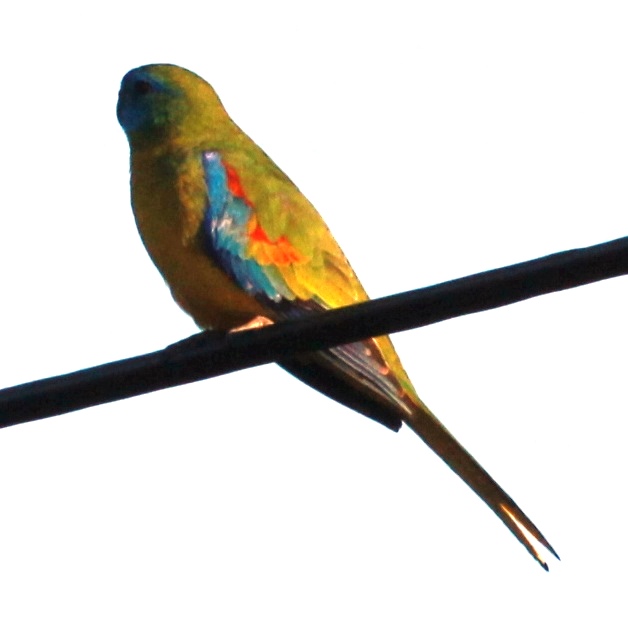 They have a large range in eastern Australia mostly in NSW & Victoria with a smaller range in South-east QLD. I have seen them near Amiens in the Stanthorpe area and a brief glimpse of a pair in Durikai National Forest.
They have a large range in eastern Australia mostly in NSW & Victoria with a smaller range in South-east QLD. I have seen them near Amiens in the Stanthorpe area and a brief glimpse of a pair in Durikai National Forest.
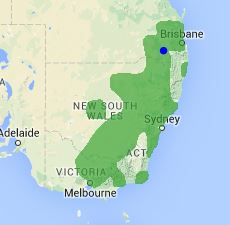 LEARN MORE ABOUT TURQUOISE PARROTS
LEARN MORE ABOUT TURQUOISE PARROTS
VIDEO
Lovely close-ups of a lovely bird! That bright turquoise face is spectacular!

